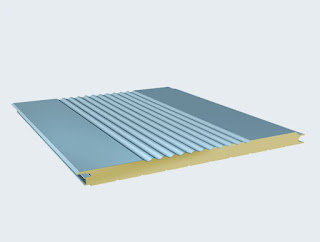What is thermal insulation panel?
Introduction:
Thermal insulation panels play a pivotal role in enhancing energy efficiency and maintaining optimal temperatures within various structures. In essence, a thermal insulation panel is a specialized construction material designed to minimize heat transfer between the interior and exterior of buildings or appliances.
Origin and Development:
The concept of thermal insulation panels originated from the necessity to combat energy losses and improve overall thermal performance. As buildings became more complex and energy costs surged, the need for efficient insulation solutions became apparent. Engineers and scientists delved into developing materials that could effectively resist heat transfer, leading to the evolution of thermal insulation panels.
Justification and Validation:
The effectiveness of thermal insulation panels lies in their ability to impede the transfer of heat through conduction, convection, and radiation. These panels are typically composed of materials with low thermal conductivity, such as fiberglass, foam boards, or reflective foils. Rigorous testing and research have validated their efficiency in reducing heat flow, thereby lowering energy consumption for heating and cooling systems.
Significance in Energy Conservation:
Thermal insulation panels contribute significantly to energy conservation, making them indispensable in the construction industry. By minimizing heat exchange between the interior and exterior environments, these panels reduce the reliance on heating and cooling systems. This, in turn, leads to lower energy consumption, decreased greenhouse gas emissions, and a more sustainable approach to building design.
Environmental Impact:
The widespread adoption of thermal insulation panels aligns with global efforts to mitigate climate change. Reduced energy consumption translates to decreased reliance on fossil fuels, positively impacting air quality and reducing carbon footprints. As a result, these panels not only contribute to individual energy savings but also contribute to the broader goal of creating environmentally friendly and sustainable communities.
Architectural Integration:
The versatility of thermal insulation panels allows architects and builders to integrate them seamlessly into various structures. From residential homes to commercial buildings, these panels can be customized to suit specific design requirements without compromising their insulating properties. This flexibility empowers architects to prioritize both aesthetics and energy efficiency in their designs.
Economic Implications:
Beyond environmental benefits, the use of thermal insulation panels carries significant economic implications. Reduced energy consumption leads to lower utility bills for individuals and businesses alike. Additionally, governments and organizations may incentivize the adoption of energy-efficient practices, further promoting the widespread use of thermal insulation panels as a cost-effective solution.
Conclusion:
In conclusion, thermal insulation panels serve as a cornerstone in the quest for energy-efficient and sustainable construction practices. Their evolution from a basic concept to a crucial component in modern architecture underscores the importance of addressing energy challenges in our built environment. As the world continues to prioritize sustainability, the role of thermal insulation panels will only grow, leaving an indelible mark on the future of construction and energy conservation.

评论
发表评论